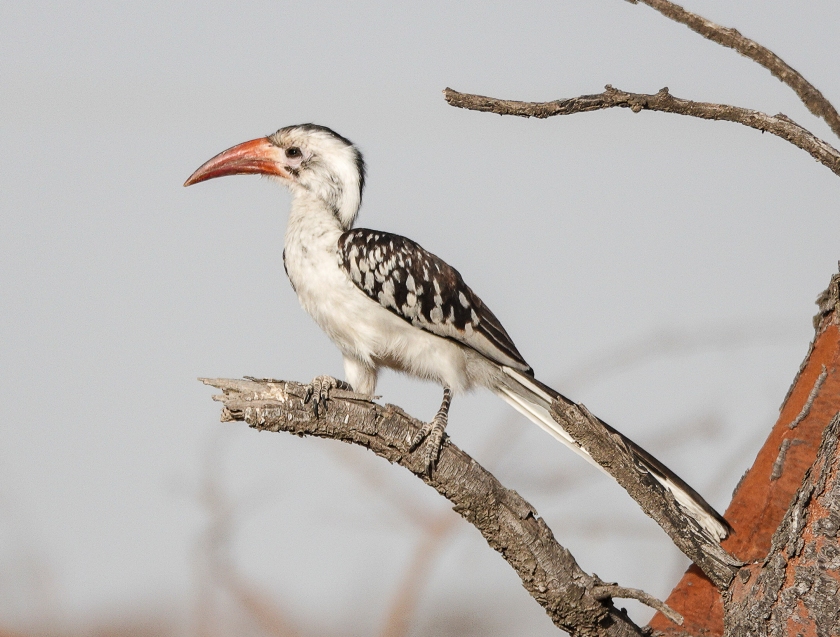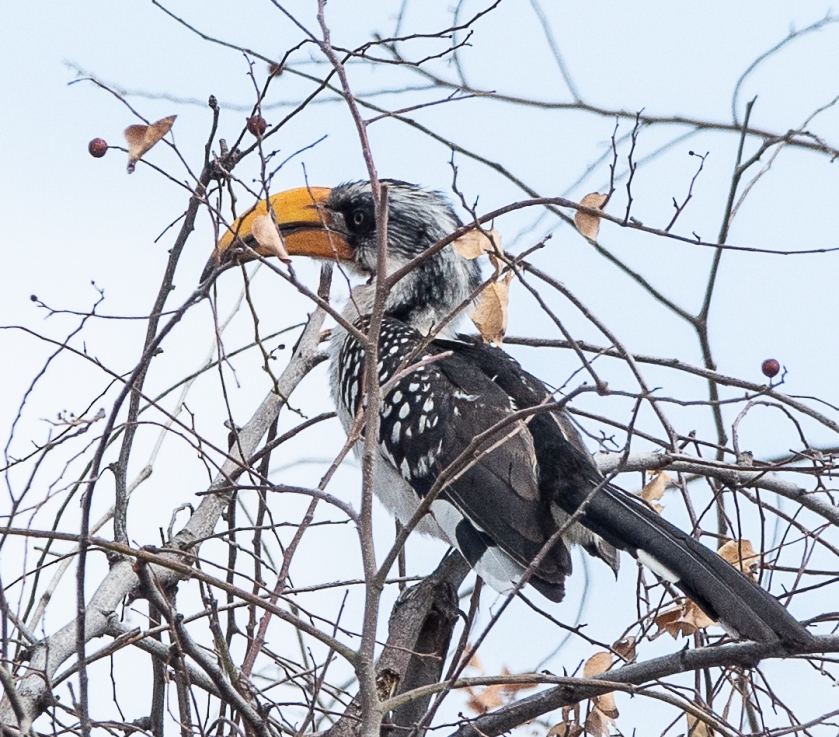Time for birds, I think.
Ethiopia has nine species of Hornbill, of which I saw and photographed five. They are the most unlikely birds, with bills that seem disproportionate to their bodies. These bills are in fact well adapted to their omnivorous diet which includes fruit, insects and even small animals. I’ll start with the smallest bill: a female Northern Red-billed Hornbill, Tockus erythrorhynchus.

Her mate has a larger bill, and looks correspondingly self-satisfied::

They were perched in the same tree, and are probably a monogamous pair. When it comes time to nest, the female retreats to a hole in a tree, and walls herself in. The male then feeds her and the young chicks through a small hole until they are big enough to safely emerge. Very 1950’s.
The Hemprich’s Hornbill, Lophoceros hemprichii, has a strong sturdy bill:

Whereas the Eastern Yellow-Billed Hornbill, Tockus flavirostris, has a curvier bill in a cheerful yellow, always held pointing jauntily upwards:*

Most dramatic of all is the large Silvery-cheeked Hornbill, Bycanistes braves, photographed in the parking lot of an urban hotel:

It is a mystery why on earth anyone would name this bird after its discreetly silvered cheeks rather than after the blindingly enormous casque on top of its bill. The casque acts to amplify sounds and is also likely that in males the bigger the casque the higher the status (it can take years to grow to full size). Its weight may also help in digging, and in attacking bark to get at insects.
The monster of the hornbill group is the Abyssinian Ground Hornbill, Bucorvus abyssinicus, which I’ll save for another time.
*In Southern Africa, this habitual posture led people to think of the Yellow-Billed Hornbill as a symbol of optimism, as this legend illustrates: https://www.sabisabi.com/blog/9551/african-tales-4/
They certainly are impressive. I saw several in the Tigray area.
LikeLike
Neato! 1950’s indeed!
LikeLike